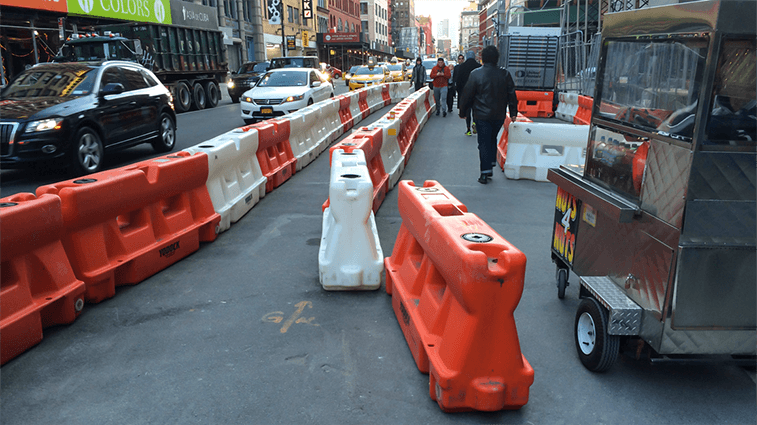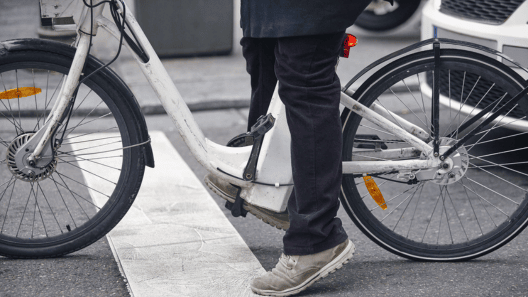
Walk This Way
There’s so much construction in New York that simply walking around Manhattan can feel like an obstacle course. Sidewalks are strewn with construction fences, sidewalk sheds and the notorious temporary pedestrian walkways.
When construction fences protrude over the property line, contractors may be required to provide viable alternatives for pedestrians. Here are the common circumstances:
Construction fence protrudes less than 3 feet over the property line
The DOT allows the construction fence to encroach up to 3 feet over the property line without requiring contractors to provide an alternate walkway so long as there is still at least 5 feet of clear passage for pedestrians.
Construction fence protrudes more than 3 feet over the property line
If construction fences protrude more than 3 feet over the property line but a 5-foot minimum walkway remains, contractors are required to install a temporary partial sidewalk. Temporary partial sidewalks must at minimum be 5 feet, remain on the sidewalk and be accessible. The most common layouts are a street facing walkway or a tunnel walkway through the construction fence.

Construction fence does not leave 5 feet for pedestrians
When an encroaching construction fence does not leave 5 feet of clear sidewalk passage for pedestrians, the DOT requires a temporary pedestrian walkway in the road. This walkway must be 5 feet in width, clearly marked and accessible. A temporary pedestrian walkway in the road must be as safe as the pre-construction condition. An Occupancy of Sidewalk Permit is also required when 5 feet of clear walkway is not available.

Full sidewalk closing with no road walkway alternative
A full sidewalk closure without providing an alternative is only possible if the temporary walkway in the road would seriously infringe upon traffic. Acquiring this type of permit is difficult because requiring pedestrians to cross the street is the most dangerous option for pedestrians. The DOT considers a number of factors before granting this permit including the amount of pedestrian activity, the type of job and the presence of residences.
Accessibility
The DOT requires all temporary walkways in the road to be compliant with Federal, State and local laws, including the ADA. Temporary paths must be unimpeded. Barricades are required to protect the path on the traffic side, construction side, the bottom of pedestrian ramps and in front of hazardous objects. Barricades must be firm and detectable.
Signage is required at intersections warning of the pathway or closure. This gives pedestrians the opportunity to make decisions and minimizes pedestrian backtracking. Accessible ramps are required from curb leading into the road walkway. All road markings, signs and signals must comply with MUTCD standards.
Have specific questions about temporary walkways? Contact us.








